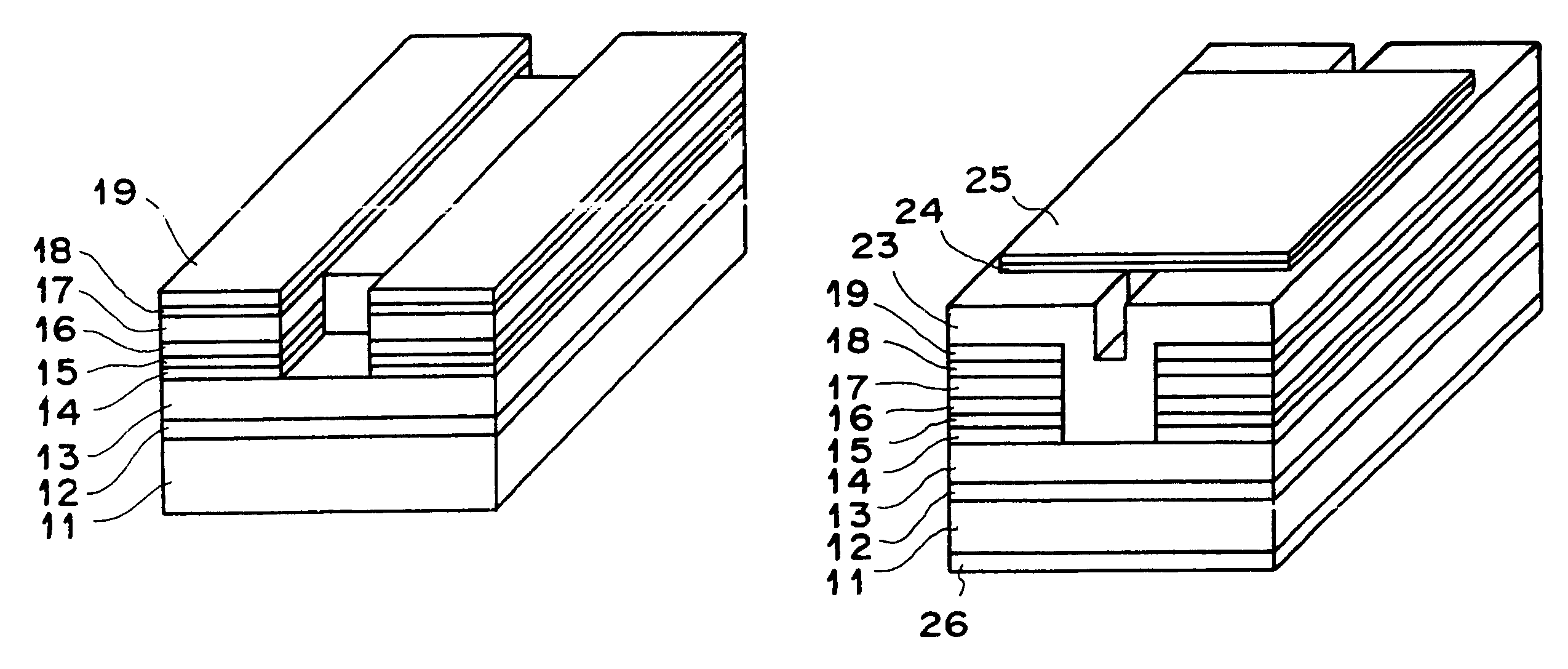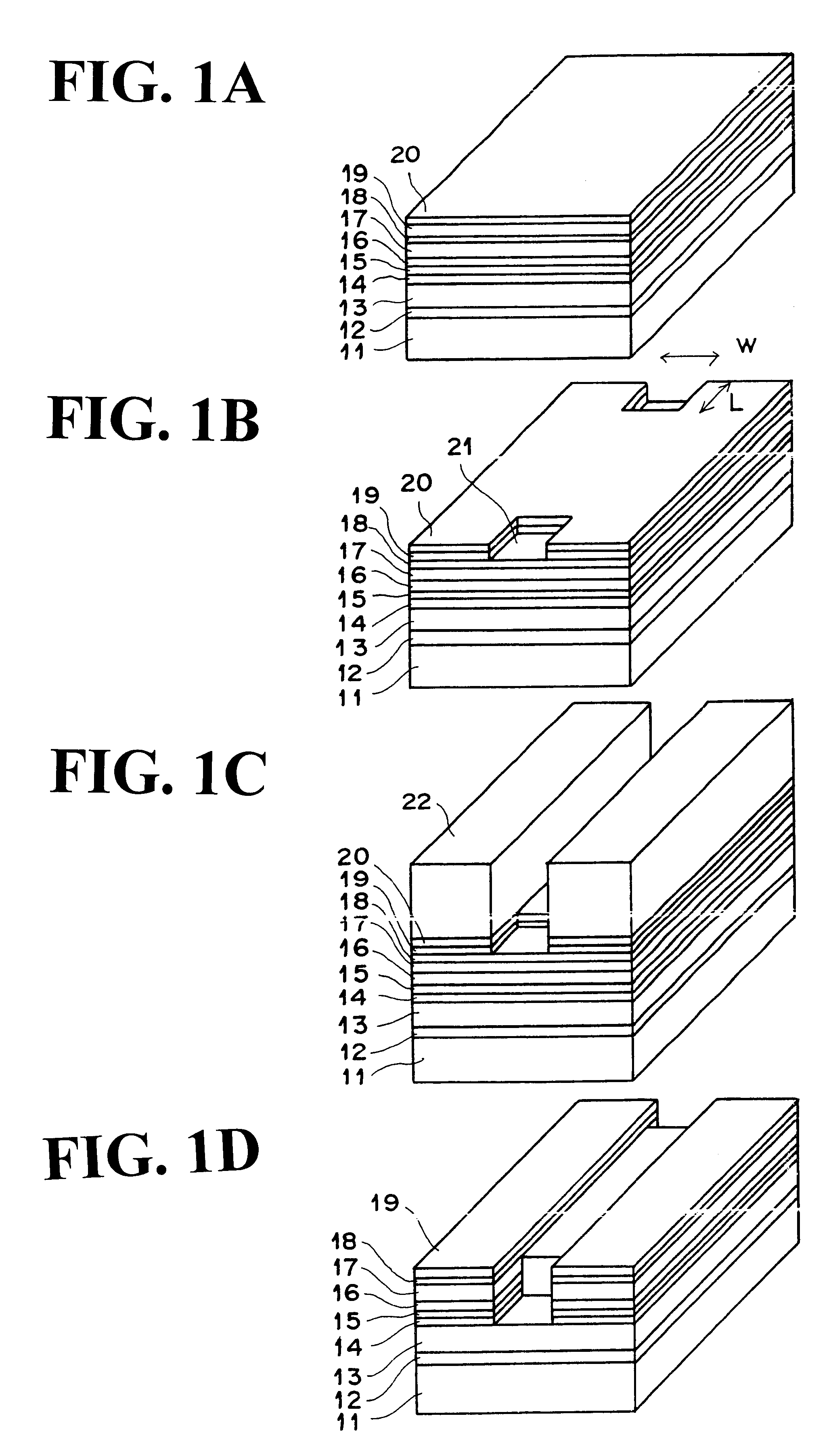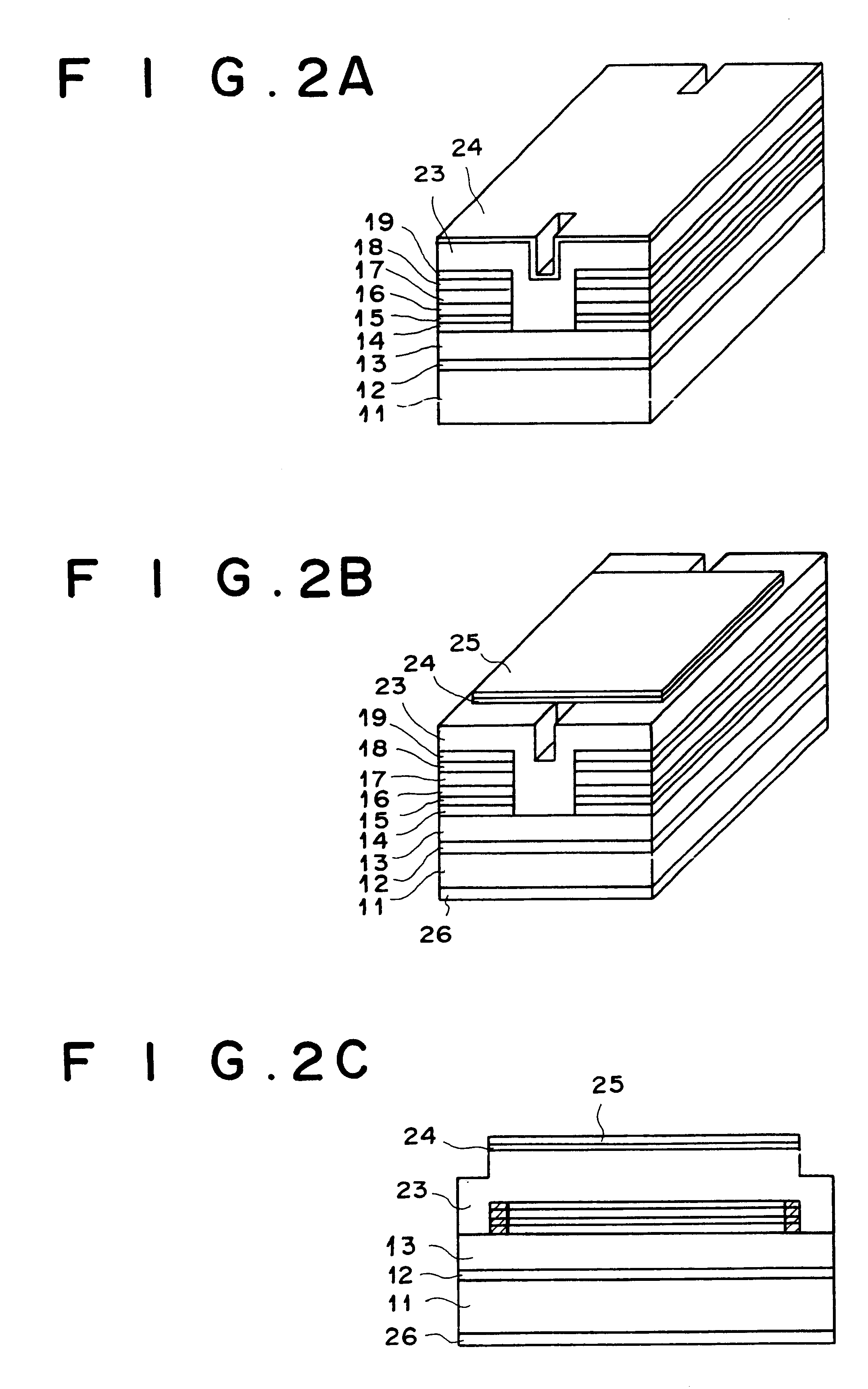Semiconductor light emitting device in which near-edge portion is filled with doped regrowth layer, and dopant to regrowth layer is diffused into near-edge region of active layer
a technology of regrowth layer and light-emitting device, which is applied in the direction of solid-state device, laser, semiconductor laser, etc., can solve the problems of so-called catastrophic optical mirror damage (comd), damage to end facet, and formation of vicious cycl
- Summary
- Abstract
- Description
- Claims
- Application Information
AI Technical Summary
Benefits of technology
Problems solved by technology
Method used
Image
Examples
first example
of Use
A first example of use of the semiconductor laser device as the above embodiment is explained below with reference to FIG. 4, which is a diagram illustrating an outline of a construction of a solid-state laser apparatus which generates a second harmonic. In the example of FIG. 4, the semiconductor laser device as the above embodiment is used as an excitation light source in the solid-state laser apparatus.
The solid-state laser apparatus of FIG. 4 comprises a semiconductor laser device 71, a lens 72, a solid-state laser crystal 73, an output mirror 74, a KNbO.sub.3 nonlinear crystal 75, a coating film 76, a beam splitter 77, and a light receiving element 78. The semiconductor laser device 71 is the semiconductor laser device as the embodiment of the present invention, and emits single-mode light as the excitation light. The lens 72 collects the excitation light emitted from the semiconductor laser device 71. The solid-state laser crystal 73 is excited by the collected excitatio...
second example
of Use
A second example of use of the semiconductor laser device as the embodiment is explained below with reference to FIG. 5, which is a diagram illustrating an outline of a construction of another solid-state laser apparatus which generates a second harmonic. In the example of FIG. 5, the semiconductor laser device as the above embodiment is also used as an excitation light source in the solid-state laser apparatus.
The laser apparatus of FIG. 5 comprises a Peltier element 80, a semiconductor laser device 81, a waveguide grating 82, a MgO-LN waveguide SHG (second harmonic generator) 83, a beam splitter 86, and a light receiving element 87. The semiconductor laser device 81 is the semiconductor laser device as the embodiment of the present invention, and emits single-mode light as the excitation light. The semiconductor laser device 81, the waveguide grating 82, and the MgO-LN waveguide SHG 83 are mounted on the Peltier element 80, and the temperature of the semiconductor laser devi...
PUM
 Login to View More
Login to View More Abstract
Description
Claims
Application Information
 Login to View More
Login to View More - R&D
- Intellectual Property
- Life Sciences
- Materials
- Tech Scout
- Unparalleled Data Quality
- Higher Quality Content
- 60% Fewer Hallucinations
Browse by: Latest US Patents, China's latest patents, Technical Efficacy Thesaurus, Application Domain, Technology Topic, Popular Technical Reports.
© 2025 PatSnap. All rights reserved.Legal|Privacy policy|Modern Slavery Act Transparency Statement|Sitemap|About US| Contact US: help@patsnap.com



